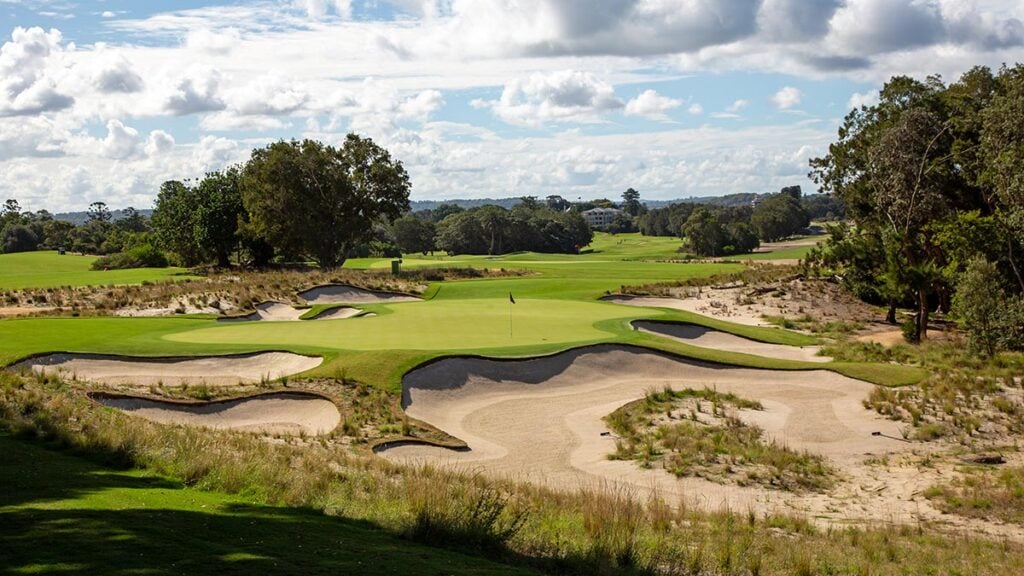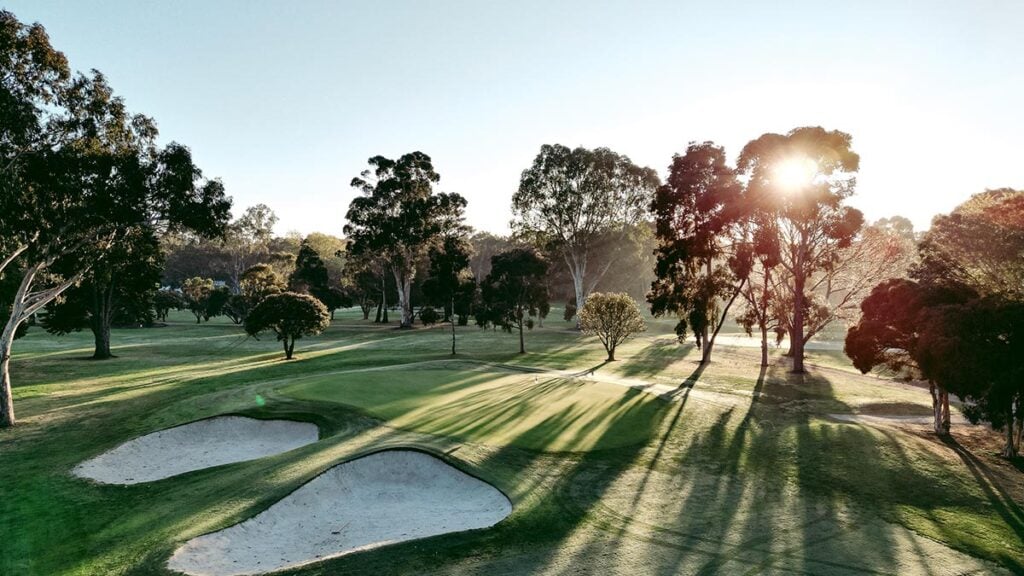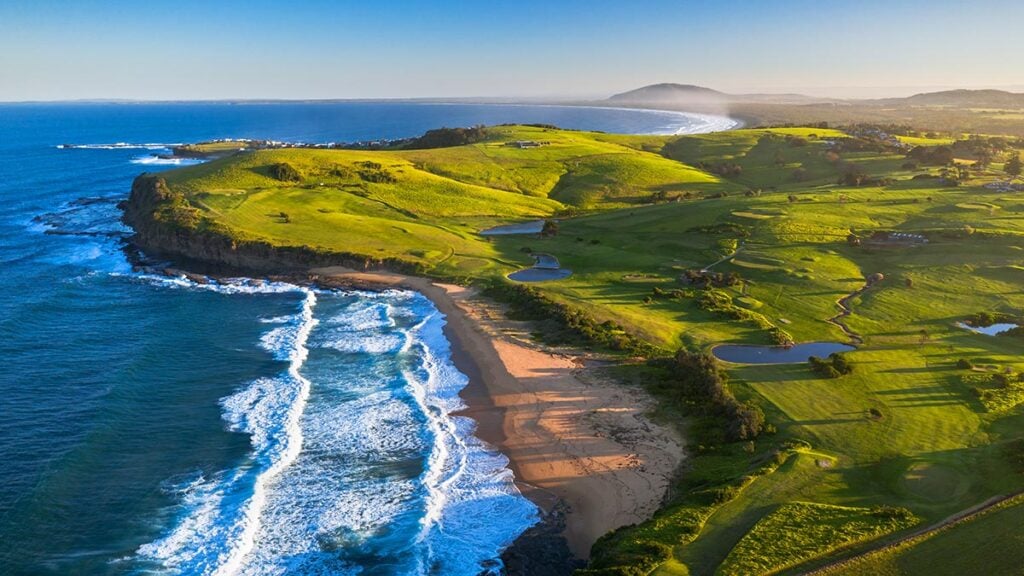[PHOTO: Stuart Franklin]
This doesn’t happen too often. When Guy Kinnings takes over from Keith Pelley and becomes chief executive of the European Tour Group on April 2, the 58-year-old Englishman will be only the fifth man to fill that high-profile role since the Old World circuit officially began in 1972. And much has changed. The requirements of the job facing John Jacobs, Ken Schofield and George O’Grady were hugely distinct from those Kinnings will be asked to contend with. The still-to-be revealed results of talks between the PGA Tour, Saudi Arabia’s Public Investment Fund and the Strategic Sports Group (SSG) will largely dictate, at least in the short term, exactly what those demands will be.
And yes, it all came as a bit of a surprise. Even last weekend, as Keith Pelley hosted his 60th birthday party (an occasion that included an Elton John impersonator and an enthusiastic rendition of “Delilah” by himself), the Canadian gave no hint of his imminent plans to head home to Toronto and a job with Maple Leaf Sports & Entertainment Ltd.
So, amid much secrecy – and now uncertainty – where is the DP World Tour today? And where is it heading?
For all that the immediate future remains unknown – save for the fact that Pelley will remain with the tour until April to try to help see the negotiations with the PGA Tour, the PIF and the SSG through to a conclusion – the perennial problem facing the DP World Tour (what was the European Tour) is unlikely to change. Forever second-best to the more lucrative PGA Tour, the Wentworth-based organisation has for long enough struggled to come up with more than a handful of truly high-profile events.
A couple of the January tournaments in the Middle East stand out. So does the little window between the US Open and the Open Championship that contains the likes of the Scottish Open. And the conclusion of the PGA Tour season does theoretically allow the leading players some subsequent opportunities to tee it up in Europe.
That’s about it, though. As renowned swing coach Pete Cowen laments, “for much of the season, the DP World schedule is filled with tournaments the biggest name players are never going to play in”.
While not disputing that basic fact, former Ryder Cup captain Paul McGinley is more understanding.
“People point at the long periods when the top players are elsewhere,” shrugs the Irishman. “But there are dynamics at play in today’s world that used to be a lot less significant. Prizemoney has exploded around the world, especially on the PGA Tour. Secondly, the top players, as independent traders, have all decided to chase that money and go and play in America. Those dynamics were not in play to anything like the same extent when Ken and George were in charge. Now though, those two huge factors work against us and we need to be aware of them.
“It’s quite incredibly that we have come out the other side, on top of COVID, in a strong and viable financial position,” McGinley continues. “Most importantly, we are sitting at the table where the negotiations between the PGA Tour and PIF are taking place. How anybody can see Keith Pelley’s tenure as a disaster is beyond me. I really find it disheartening when people look exclusively at the negatives.”
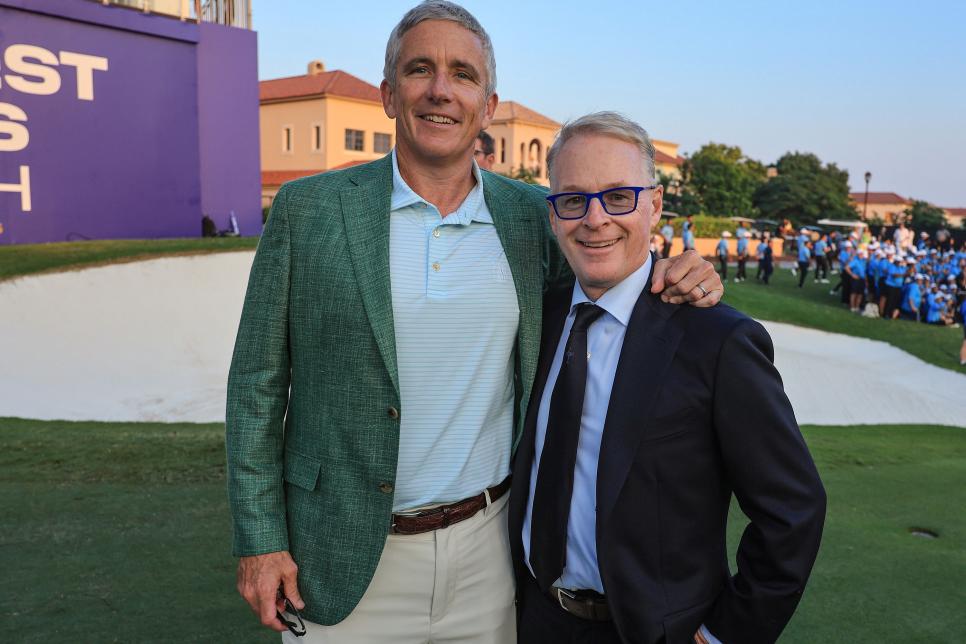
“I wish I was playing now,” says one former player. “I would have no complaints. Now I hear them moaning about dry pasta in the player’s lounge. And in my day, there was no lounge and there was no pasta, dry or otherwise. We lined up with the members in the clubhouse when we wanted to eat. Today, it’s about trying to keep 400 CEOs happy. They are all the masters of their own universes.”
Another criticism often aimed at the DP World Tour is that any level of self-importance is misplaced, even if there is one area in which the European experience outguns the PGA Tour. Culturally, it is a no-contest.
“We went to some brilliant venues last year,” says one player. “Great cities like Rome, Paris or Madrid. The beauty of our tour is the places we go to. That will always be its stand-out appeal, which is why we need to do it as well as we can. That will incentivise guys to come and play. Our selling point is not a $10 million purse. Our selling point is where we play golf. And the environment that is created. The camaraderie on tour is great. Generally speaking, it’s a more enjoyable place to play golf than the PGA Tour, which has to count for something.”
But not that much. To many, the DP World Tour it is nothing more than a “feeder” for the PGA Tour. At least in some minds, that claim has gained further credence now that the top 10 players on the DP World Tour not in possession of a PGA Tour card are, at the end of each season, exempted onto the New World circuit.
“Giving 10 PGA Tour cards out each year is a continuation of us being the European Korn Ferry Tour,” says one veteran player. “But I understand it. I played with Monty and Seve and all the rest. But if you are, say, 25 and have been on tour for four years, you know no different. The tour now is all you know. And the PGA Tour is where you want to play, which is why I think maybe 90 percent of the players are happy about those 10 spots.”
Throw in other terms of the “strategic alliance” whereby the PGA Tour pumps money into DP World Tour prize funds and, at first glance, the “second best” label is further enhanced.
“We’ve lost something,” acknowledges another veteran DP World Tour professional. “We are a secondary tour, one where the decisions are made elsewhere. Too often, we have to do something because if we don’t there is no tour. We are so weak. We are really lucky to be playing for as much as we do. The money is there from the PGA Tour, but at many events there is hardly any interest.
“In Japan last year, no one gave a s–t that we were there. It didn’t feel like a tournament, but we were playing for nearly $4 million. There was nobody watching. It is frustrating. We want to be part of something that is great. We want to go to places with atmosphere and big crowds. We want to feel like it matters.”
That ultimately downbeat point of view is not without support.
“If you’re a player with ambitions to play in America – and many do – there is no reason why your morale should be anything but very good,” says another tour pro. “You’re playing for more money over here and you have a great opportunity to make it onto the PGA Tour. That’s brilliant. The deal Keith did with the Americans does have positive aspects.
“On the other hand, there are players who harbour wider concerns down the road, with the direction of the tour generally,” he continues. “We are part of a system that is working towards something else, to some degree. The European circuit has always been a ‘feeder’ into the PGA Tour, but not to the extent it now is. And definitely not officially. The formalising of that is a big thing. And the 10-card thing is significant.”
Is there a way round such feelings of torpor? Maybe not now, but there was once a chance.
“There was a moment at a Lancome Trophy in Paris back in the early 1990s,” says Schofield, whose term as executive director ran from 1975 to 2004. “Back then, Tom Kite said to me – at a time when the exchange rate between the dollar and the pound was much in our favour – that he could see us catching up with the PGA Tour in financial terms.
“We did have five wonderful aces in Seve Ballesteros, Nick Faldo, Sandy Lyle, Ian Woosnam and Bernhard Langer. Throw in two more world No.1s in Greg Norman and Nick Price and maybe it was theoretically in reach. But we were always at the mercy of global politics. For example, when Saddam Hussein provoked the American invasion of Iraq not too long after Faldo won the 1990 Open Championship at St Andrews, any thoughts we had for further expansion in places like the Middle East had to be put on hold.”
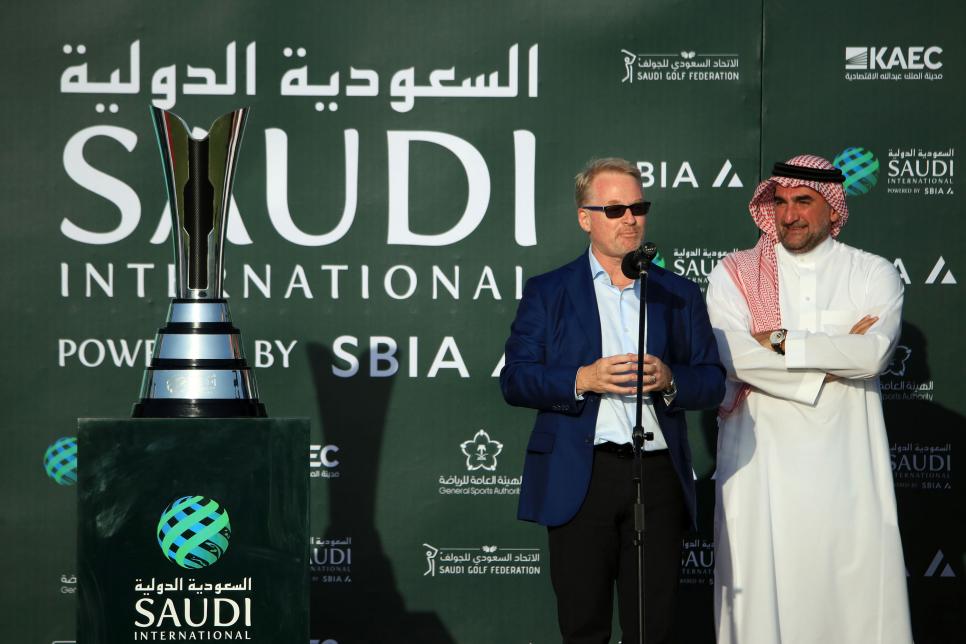
“If I had any moral problems about going to certain places, I would have played in maybe half of the events I have played in,” says one pro. “I’ve been to Saudi and didn’t mind it. I don’t have sleepless nights about women’s rights there. I go to play golf. Which doesn’t mean I don’t care. I’ve been in China. We’ve played in Russia. We got to these places to do our jobs. If we never went to the Middle East, our tour would be very different. Then again, the Saudis could have pulled the plug on their involvement at any time. That was always a concern for me.”
Ultimately, of course, Pelley played safe and went with the PGA Tour, signing a 13-year joint venture that one of his predecessors finds hard to understand.
“Not going with the Saudis astonished me,” Schofield says. “Had they come to us back in the day, my board would have demanded that we find a way forward with them. I like to think I wouldn’t have needed to be directed to do just that. I would have done so without being told. That was my job. Now, of course, the European tour is at the beck and call of [PGA Tour commissioner] Mr Monahan. They had the chance to be on the top floor with the Saudis. It could have been a home run. Now, at best, they are at second or third base.”
Indeed, talk to a number of players and there is still some whining about the Saudi money being “lost”. But those who have listened to what the Saudis presented seem to feel otherwise. The Saudi offer was all based on what the teams would sell for. But there was no certainty there. It was equity share in what the Saudis said would be enormous but currently isn’t. So the guys “in the room” were happy that Pelley did a good job. For them, getting those 10 cards was a major coup. The rank-and-file reassured by the guaranteed money from the PGA Tour.
Looking forward, it would be surprising if the appointment of Kinnings came as a surprise to anyone connected with the DP World Tour. Head of IMG’s global golf division, where he handled clients like Colin Montgomerie, Luke Donald and Thomas Bjorn, Kinnings has been a familiar figure in the game for many years. When he joined the then European Tour in 2018, it was assumed by many that he did not come on board to be “No.2” forever. And so it has proved.
What lies ahead for Kinnings and the tour he now heads is a future filled, at least immediately, with uncertainty. But none of that is Pelley’s doing. It would be churlish indeed to lay any “blame” at his door for what may be coming.

